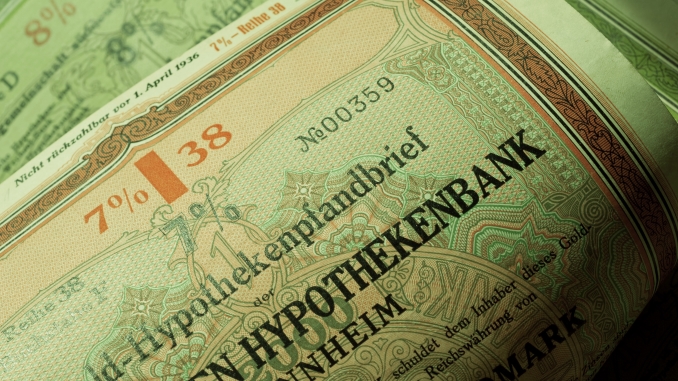
The Association of German Pfandbrief Banks (vdp) has set minimum standards for issuance to be eligible for the Green Pfandbrief/Grüner Pfandbrief trademark, aligning it with initiatives such as the Green Bond Principles and the draft EU sustainable finance taxonomy and Green Bond Standard.
Earlier this year the vdp acquired the trademark – as well as the domains www.green-pfandbrief.com and www.gruener-pfandbrief.de – from Berlin Hyp, which had used them since issuing the first green covered bond in April 2015. A vdp working group then drew up the minimum standards that were announced today (Wednesday).
“We see great potential for Green Pfandbriefe,” said Jens Tolckmitt, chief executive of the vdp. “The new minimum standards will provide a further boost to this still-young market segment, as they provide useful guidance for Pfandbrief banks and reassure investors that Green Pfandbriefe actually meet the stringent requirements placed on them.”
Alongside Berlin Hyp, German issuers Deutsche Hypo, LBBW and MünchenerHyp have issued covered bonds with environmental labels, and all their issuance is understood to satisfy the new standards.
The minimum standards come by way of issuers committing to follow them when seeking a licence from the vdp to use the Green Pfandbrief/Grüner Pfandbrief trademark.
Issuers are required to commit to complying with applicable provisions of the Pfandbrief Act as well as the Green Bond Principles, with reporting requirements and external reviews aligned with market practice and proposals for the EU Green Bond Standard.
The eligible assets criteria reflect those that have been used in existing German green covered bonds and internationally. Properties will be eligible if they are in the top 15% of the national stock with regard to energy consumption/demand – in line with the Climate Bonds Initiative and proposed taxonomy.
Commercial and residential properties can also be eligible by meeting at least one of several other criteria. For example: commercial properties whose sustainability certificates are ranked in an established provider’s top categories; residential properties assigned to energy class B or better, or with energy demand no greater than 75kWh/m2. Renovations or refurbishments resulting in a reduction in energy consumption or demand of at least 30% are also eligible, in line with the latest draft taxonomy.
According to the vdp, such green Pfandbriefe can play a part in helping achieve the German government’s climate protection plan, whereby the building sector in Germany is expected to reduce carbon emissions to around 70m tonnes in 2030 and become CO2 neutral by 2050.
The minimum standards will be regularly reviewed and updated by a vdp committee that includes all the Pfandbrief issuers already active in the segment.
“The technical criteria of the expected EU taxonomy for environmentally sustainable economic activities for climate protection and the expected EU Green Bond Standard should serve as a guide in this context,” according to the minimum standards text.
The minimum standards require that the mortgage cover pools for mortgage Pfandbriefe contain a nominal volume of eligible assets that exceeds the total nominal value of Green Pfandbriefe being issued. They thereby tie the green covered bond issuance to assets in the cover pool in a way that has become marked standard, but which has not always been obligatory.
The vdp said its minimum standards are linked to the Energy Efficient Mortgage Initiative (EEMI) of the EMF-ECBC, for which it is acting as national hub.



